
10 minute read
ADDICTION HITS HOME
from Building Insight May 2019
by BIAW
MAKING IT YOUR BUSINESS ADDICTION HITS HOME
CONSTRUCTION WORKERS AMONG HIGHEST WITH INJURY-RELATED PRESCRIPTION PAINKILLER DEATHS
A little over a year ago, the March 5, 2018, edition of Time magazine was the first issue in their 95-year history entirely devoted to one topic. That topic: The opioid crisis. According to Time’s report, it is the worst addiction epidemic in // AVALY U.S. history. SCARPELLI “In 2016 alone, GUEST COLUMNIST nearly 64,000 Americans died from drug overdoses—roughly as With partners Job-Site Safety Institute and Advocates for Human Potential, many as were lost during the entire NAHB has developed resources to expand on what government and health Vietnam, Iraq, and Afghanistan wars care are doing to create “a proactive approach to this crisis with knowledge combined.” and without stigma.”
It’s a tough topic. Opioid overdos- NAHB’s program is called Making It Your Business. Because, unfortunately, es now claim more lives than car it is our business. The construction sector experiences the highest amount accidents each year. And if you are of drug/opioid-involved overdose deaths, followed by extraction workers, not personally affected, the stats can food preparation/serving, health care practitioners, health care support, and still feel far personal care/service (Centers for Disease Control and removed from every day life. But given the staggering According to NAHB data, over half the people who died as a result of an opioid overdose Prevention, August 2018). As noted in NAHB’s opioid information, the impact on businesses can be significant, including loss of productivity and increased healthcare expenses. Employees proportions of this ongoing crisis, it is likely had at least one job-related injury. in the grip of substance abuse miss almost 50% more time from work compared to their peers. In these situations, turnover is high and employee morale is low. that many of us The connecting force across industry sectors, age, demographics, race and have employees or coworkers caught gender? Chronic pain. Most people who died of an opioid overdose were in this terrible struggle. diagnosed with chronic pain within a year of their death. Another shared gate-
Earlier this year, the National way—most people addicted to opioids began taking prescription opioids, usuAssociation of Home Builders (NAHB) ally prescribed after an injury. According to NAHB data, over half the people held a webinar on the opioid crisis who died as a result of an opioid overdose had at least one job-related injury. explaining the basics of the problem Addressing the disease of substance abuse in the workplace can seem overand outlined resources available to our members (NAHB.org/opioids). See ADDICTION on page 13 //
//ADDICTION from page 12 //PATH from page 4
whelming. In their 2017 report, How the Prescription Drug Crisis is Impacting American Employers, the National Safety Council (NSC) found that less than two in 10 employers felt they were “extremely prepared” to deal with prescription drug misuse.
But employers play an extremely significant role in reversing this problem across the nation. The NSC found that employer-supported and monitored treatments yield better-sustained recovery rates than treatment initiated at the request of friends and family members. Let that sink in. Employers who take action can make a life-changing, even life-saving, impact on troubled employees. Which helps families and strengthens every facet of our communities.
As NAHB points out, “We have the opportunity at almost every point on a worker’s journey to help them. Whether that be through prevention and immediate action, through treatment when substance use has already occurred, or, finally, through recovery when addiction is in the process of being overcome.”
Recently, the NSC also issued a workplace-focused report to inform businesses about the current evidence surrounding opioid medications and their impact. Their goal is to create a “call to action” that enables businesses of any size to partner effectively with benefit providers, assess current workplace policies and scope of drug testing, prioritize essential education efforts, and improve access to confidential help for employees.
I encourage you to download and read NSC’s free report,
The proactive role employers can take: Opioids in the work-
place.
In this report, they identify five key factors for an effective drug-free workplace program that will help employers save money and keep their employees safe: A clearly-written policy, employee education, supervisor training, an employee assistance program, and drug testing.
In Washington state, 739 people died from opioid overdose in 2017. These figures have doubled since 2000. Even more alarming, is that at least 14% of high school students took a prescription opioid “just for fun” in 2017.
As business leaders, we make up the backbone of this community. It will take a spine of steel to reverse the addiction that has gripped many of our workers. We have to do this. For the health and success of our current employees, for the bottom line, and to create a future that holds promise for our young people. resources to enjoy the fruits of your labor, now is the time to take the next step and find a good business coach and begin the journey.
I look forward to continuing this conversation with you and hearing your thoughts so we can all learn and share the journey together.
“Sometimes the smallest step in the right direction ends up being the biggest step of your life. Tip toe if you must, but take the step.”
—Naeem Callaway
//ADJOURNS from page 5
BIAW priority for 2019. In addition, HB 1923 passed, which will increase urban residential building capacity. Sponsored by Representative Joe Fitzgibbon (D-Burien) and helped along the way by Representative Andrew Barkis (R-Olympia) and Senator Guy Palumbo (D-Maltby), HB 1923 also provides transportation State Environmental Policy Act (SEPA) appeals protection for individual projects that are consistent with the underlying transportation plan. This issue was also a BIAW priority this year.
The bill awaits the Governor’s signature.
BIAW
STAY CONNECTED

Follow Us! Twitter.com/BIAW2 Follow Us! Instagram.com/BIAofWA Like Us! Facebook.com/BuildingIndustryAssocWA Follow Us! Linkedin.com/company/building-industryassociation-of-washington
DO YOU MEASURE UP? FOCUS ON QUALITY CERTIFIED BUILDERS HAVE COMMON GOAL: PURSUIT OF EXCELLENCE
BIAW is proud to announce two additional builders to the Certified Builder program, bringing our total designees to 22, with four more candidates in the process of being approved. Launched in 2018, BIAW’s Certified // HILLARY Builder program VANATTA creates a way CERTIFICATION/ to recognize EDUCATION MANGER and designate achievement for those in the industry whose work experience and business practices exceed state standards.
To learn more about the program or how to apply, please visit BIAWCertifiedBuilder.com or contact me at (360) 352-7800 ext. 106 or hillaryv@biaw.com. Tracy Doriot Doriot Construction
In 1978, after having attended college for two years, Tracy decided that wasn’t the career path for him and established Doriot Construction. Over the last 40 years, Tracy has been hands Tracy Doriot on, crafting custom homes for clients throughout the greater Vancouver area.
In 2018, his model home entry, the Timberline, took home people’s choice awards for Best of Show, Best Architecture, Best Kitchen and Best Master Bath in the Clark County Parade of Homes, catapulting his company into the custom-home market spotlight.
In addition to his passion for building homes, Tracy also gives back to the industry as a devoted supporter of the industry and advocate for workforce development. He has served multiple years as president of his local association, BIA of Clark County, and continues his service in his current position as BIAW treasurer.
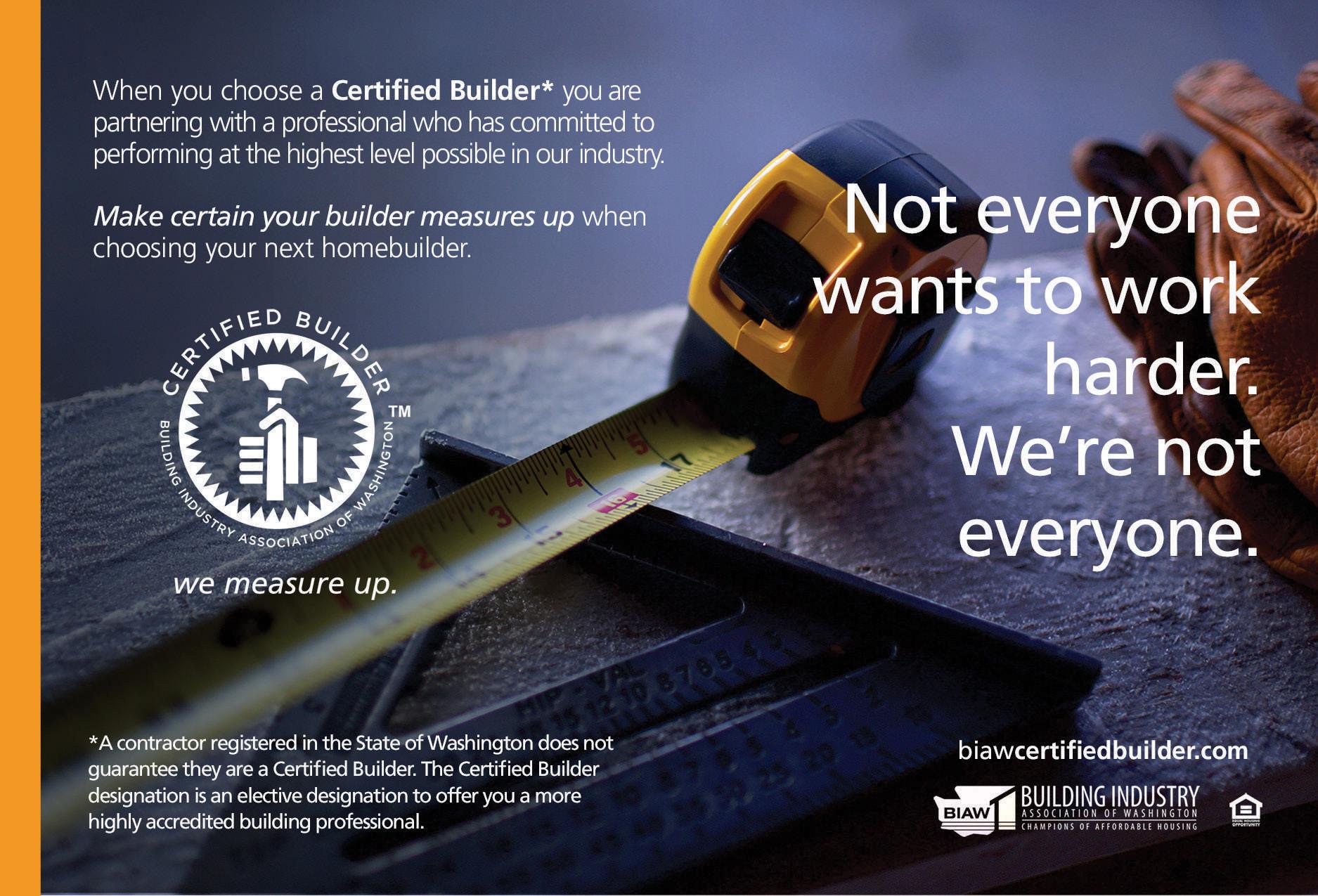
Clint Adamson Pleasant Ridge Construction
In 2004, after earning his Bachelor of Science in Economics from Washington State University, Clint formed what has now become known as Pleasant Ridge Construction. Clint likes to say he learned the construction business from the inside-out. There was not one role he didn’t tackle—from office janitor to clean up crew, to laborer, to finish carpenter, and many times the landscaper—Clint has touched all aspects of his business. With a focus on custom homes and land development, Clint Adamson Clint and his wife Kelly build and sell real estate from Yakima to the Tri-Cities.
Clint joined his local association, Central Washington HBA, in 2005 where he currently serves as president and a BIAW director.
FALL PROTECTION AWARENESS THREE SIMPLE STEPS
PLAN, PROVIDE, TRAIN—JUST THREE SIMPLE STEPS TO HELP REDUCE INJURES
Falls in the construction industry are the No. 1 cause of fatalities, costing millions of dollars in workers’ comp claims. BIAW’s group retro program, R.O.I.I.® Select, see far too many cases of debilitating injuries from falls that could have easily been avoided if workers had taken these three simple steps.
PLAN ahead to get the job done safely
Assessment of a job in the early stages of a project is critical. It can also save time on the job site if a fall protection work plan has been prepared in advance.
It is crucial that the job site area is checked for stability. In many scenarios, accidents happen on walking surfaces that are being replaced. Many DOSH citations have begun with the words ‘employer did not ensure employees had a stable work surface’ when someone fell through the underlayment or off the side of a roof when the rotten soffit area broke under the worker’s feet. Fall protection may need to be established before employees ever step foot on the roof or elevated surface as many fatalities have occurred while an employee was in the act of trying to establish fall protection on a high, steep, or unstable surface.
PROVIDE the right equipment
There are three parts of an effective fall arrest system: anchorage point, harness, and lanyard or lifeline. Make sure your fall protection equipment is in good working order. Always check to make sure ropes and harness are in good shape and not brittle or material frayed from sun exposure or chafing against surfaces. Incorrectly worn harnesses can, in some cases, cause more injury to the body than the fall to a surface itself. Worn equipment should be discarded and replaced. Make sure metal D-Rings, carabineers, snap hooks, and other connecting parts are not rusted or pitted and springs are allowing locks to move freely.
TRAIN everyone to use the equipment safely
Train your employees to be cognizant of safety by
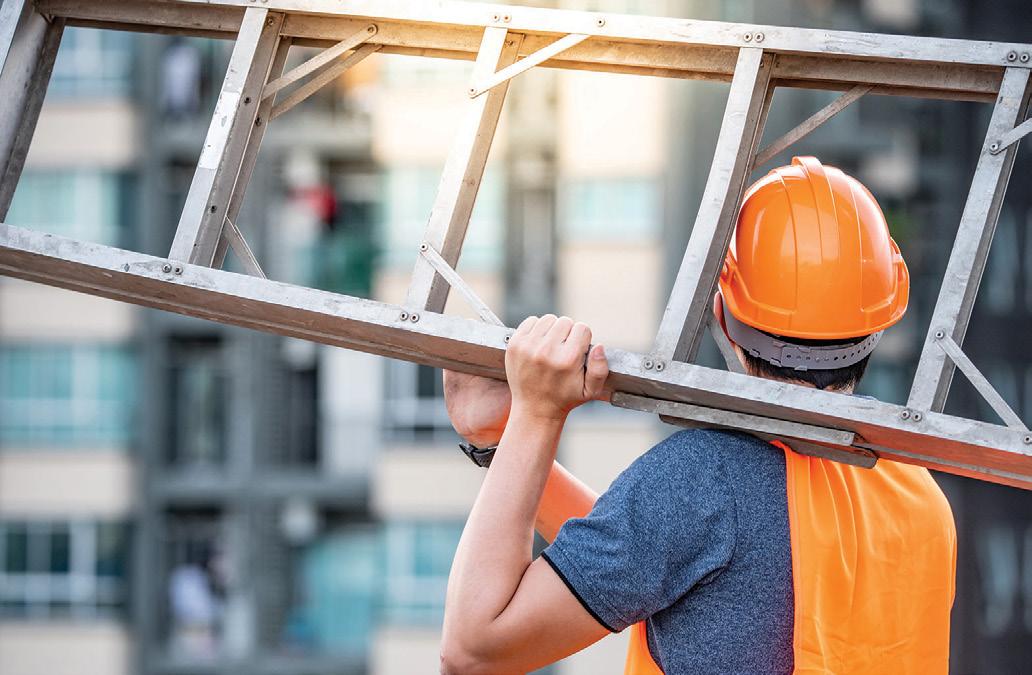
establishing consistent habits such as always inspecting your harness, lanyard and anchorage point. Workers should get into the habit of always wearing their gear and staying connected.
Workers need to consider what would happen if a fall occurs and ask themselves questions such as:
Will I actually contact the ground?
Have we figured the fall distance to include the lifeline slack and deployment of the decelerator on the fall harness?
Should I be using fall restraint or fall arrest?
Is the anchor installed correctly to the manufactures requirements and anchorage able to withstand the intended load?
Taking the time to plan ahead, provide the right equipment, and train your workers to use the provided equipment safely, will help prevent needless injuries and keep your workers safe.
SIGN UP FOR SAFETY BULLETINS If you are an R.O.I.I.® Select member participant and would like to receive our monthly email safety bulletins, contact R.O.I.I.® Select Safety Services Director Bob White at (360) 352-7800 ext. 109 or bobw@biaw.com.
SAVE THE DATE! 2019 EIR Awards June 19 | 7pm Holiday Inn, Yakima
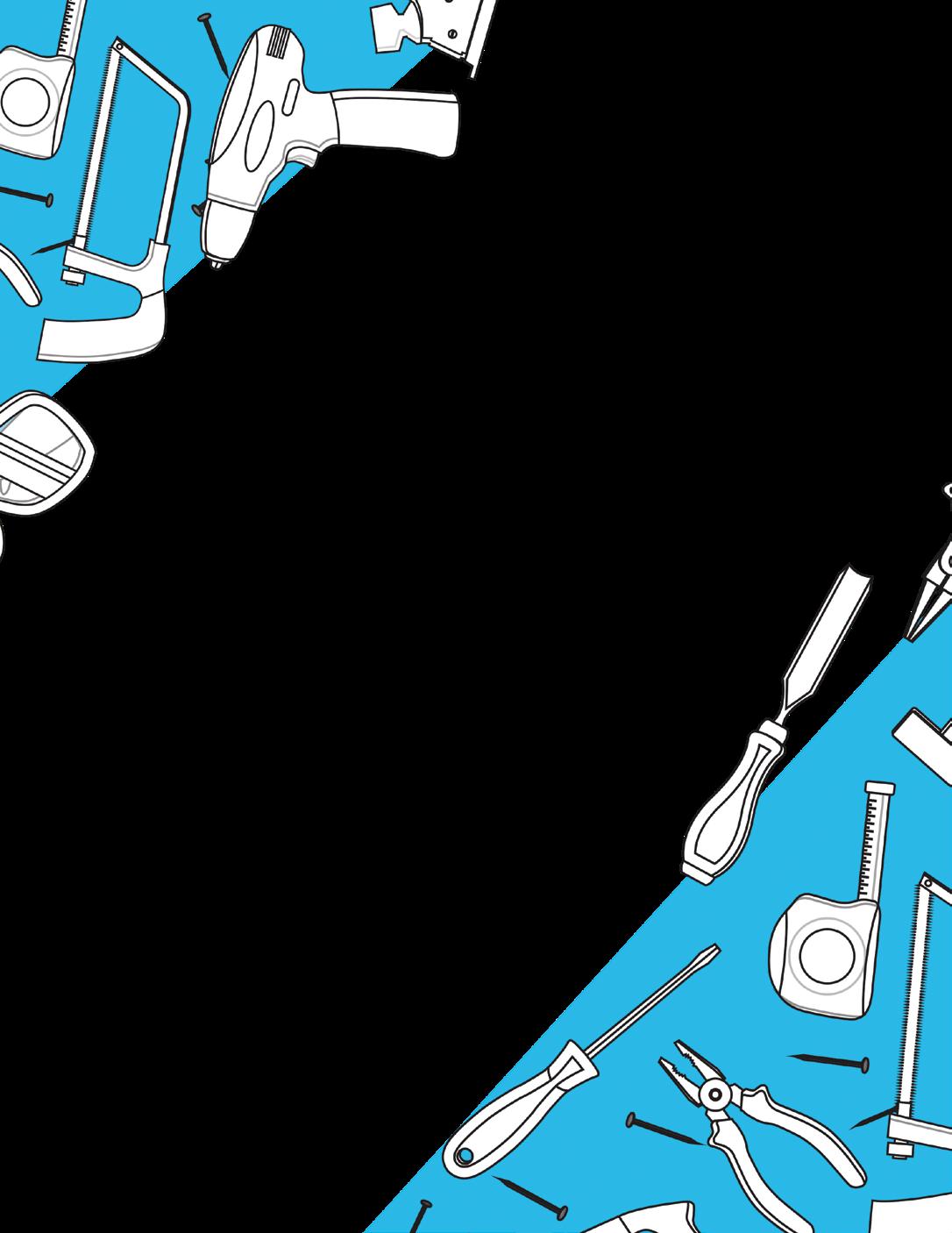
Come out and celebrate the best of the best remodeling projects from around the state during the Excellence in Remodeling awards reception. This annual event highlights quality craftsmanship performed by our members.
Suggested attire: smart casual
OPEN TO ALL | DRINKS HORS D’OEUVRES #EIR 2019
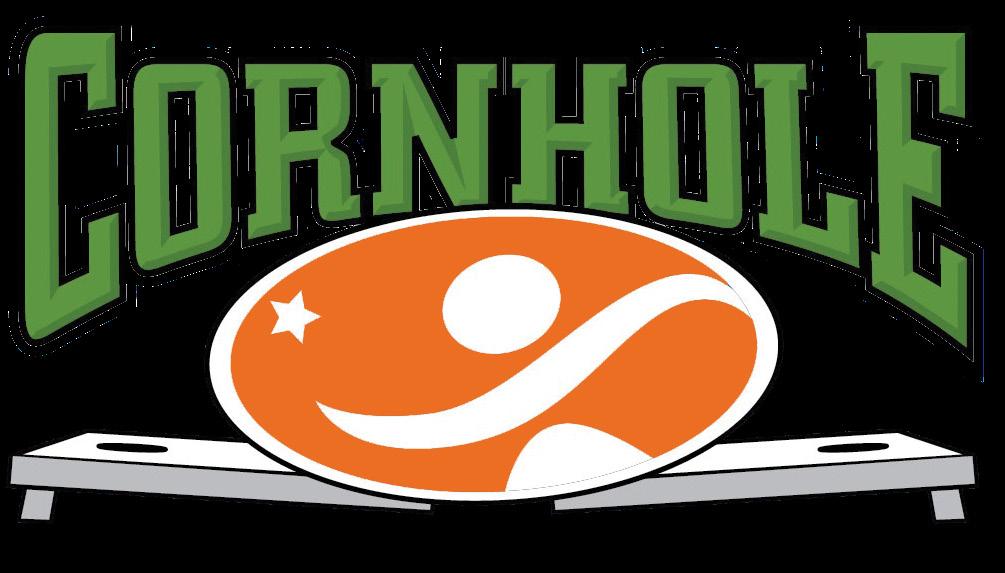
DON’T MISS THE FUN!
Building Industry Association of Washington 111 21st Avenue SW | Olympia, WA 98501 (360) 352-7800 | BIAW.com |
TOURNAMENT JUNE 20 | 4 PM | PRIZES! SUMMER BOARD MEETING Yakima Convention Center
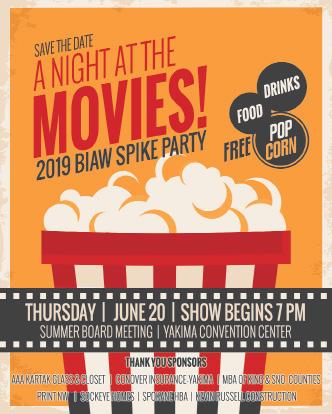
Mark your calendar for BIAW’s fourth annual Cornhole tournament. Come and enjoy the competition or better yet get in the game for $10 (includes a drink). Sign up at the board meeting. THANK YOU SPONSORS AAA KARTAK Glass & Closet Phase II General Contractor

